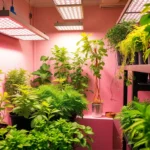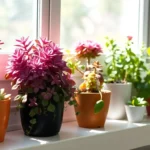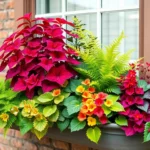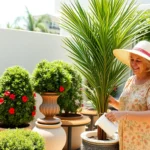Hedge plants are the secret weapon that transforms ordinary yards into stunning outdoor sanctuaries. We’ve all walked past homes with perfectly manicured hedges and wondered how they achieved that polished industry design that makes everything look so intentional and beautiful.
Whether you’re looking to create natural boundaries define garden rooms or add year-round structure to your property hedges offer endless possibilities. From classic boxwood borders to dramatic privacy screens we’ll explore how these versatile plants can solve your biggest landscaping challenges while boosting your home’s curb appeal.
The best part? Hedge landscaping doesn’t require a massive budget or professional expertise. With the right plant selections and strategic placement you can create the sophisticated outdoor space you’ve always envisioned right in your own backyard.
Create Privacy Screens With Evergreen Hedge Plants
Evergreen hedge plants offer the perfect solution for creating natural privacy screens that maintain their beauty and functionality throughout all seasons. These hardy plants provide continuous coverage while adding structure and visual appeal to our outdoor spaces.
Arborvitae for Year-Round Coverage
Arborvitae stands as our top choice for creating dense privacy screens that never lose their foliage. These versatile evergreens maintain their rich green color through winter months while forming tight, compact walls that block unwanted views effectively.
Green Giant Arborvitae grows 3 to 5 feet annually and reaches mature heights of 50 to 60 feet, making it ideal for large property boundaries. We recommend planting these specimens 5 to 6 feet apart for optimal coverage within 3 to 4 years.
Emerald Green Arborvitae offers a more compact option at 12 to 15 feet tall and 3 to 4 feet wide when mature. Plant spacing of 3 to 4 feet creates beautiful formal hedges perfect for smaller yards and garden borders.
Techny Arborvitae tolerates harsh winter conditions better than other varieties while maintaining its pyramidal shape naturally. This cultivar works exceptionally well in northern climates where temperature fluctuations challenge other evergreen options.
Leyland Cypress for Fast Growth
Leyland Cypress delivers rapid growth rates that create privacy screens faster than most other evergreen options. These hybrid trees combine the best traits of their parent species to produce vigorous, adaptable hedging plants.
Growth Rate Performance reaches 3 to 4 feet per year under optimal conditions, allowing us to establish mature looking privacy screens within 5 to 7 years. Plant spacing of 6 to 8 feet accommodates their eventual 15 to 20 foot spread while maintaining proper air circulation.
Drought Tolerance makes Leyland Cypress particularly valuable in regions with inconsistent rainfall patterns. Once established after 2 to 3 years, these trees require minimal supplemental watering during dry periods.
Versatile Placement allows us to use Leyland Cypress in various soil types and pH levels ranging from 5.0 to 8.0. These adaptable plants thrive in both full sun and partial shade conditions, making them suitable for challenging industry situations.
Boxwood for Formal Borders
Boxwood creates sophisticated formal hedges that complement traditional and contemporary industry designs equally well. These slow growing evergreens respond beautifully to pruning and shaping, allowing us to maintain precise hedge lines year after year.
English Boxwood develops into dense, compact hedges reaching 4 to 6 feet tall over 10 to 15 years. We space these plants 18 to 24 inches apart for tight, formal appearances that define garden rooms and property lines elegantly.
Japanese Boxwood offers faster growth rates than English varieties while maintaining similar formal characteristics. Plant heights of 4 to 8 feet provide excellent screening for ground level windows and outdoor living areas.
Pruning Requirements involve trimming 2 to 3 times per growing season to maintain crisp, geometric shapes. Late spring and early fall pruning sessions keep boxwood hedges looking professionally maintained throughout the year.
Design Colorful Seasonal Displays Using Flowering Hedges
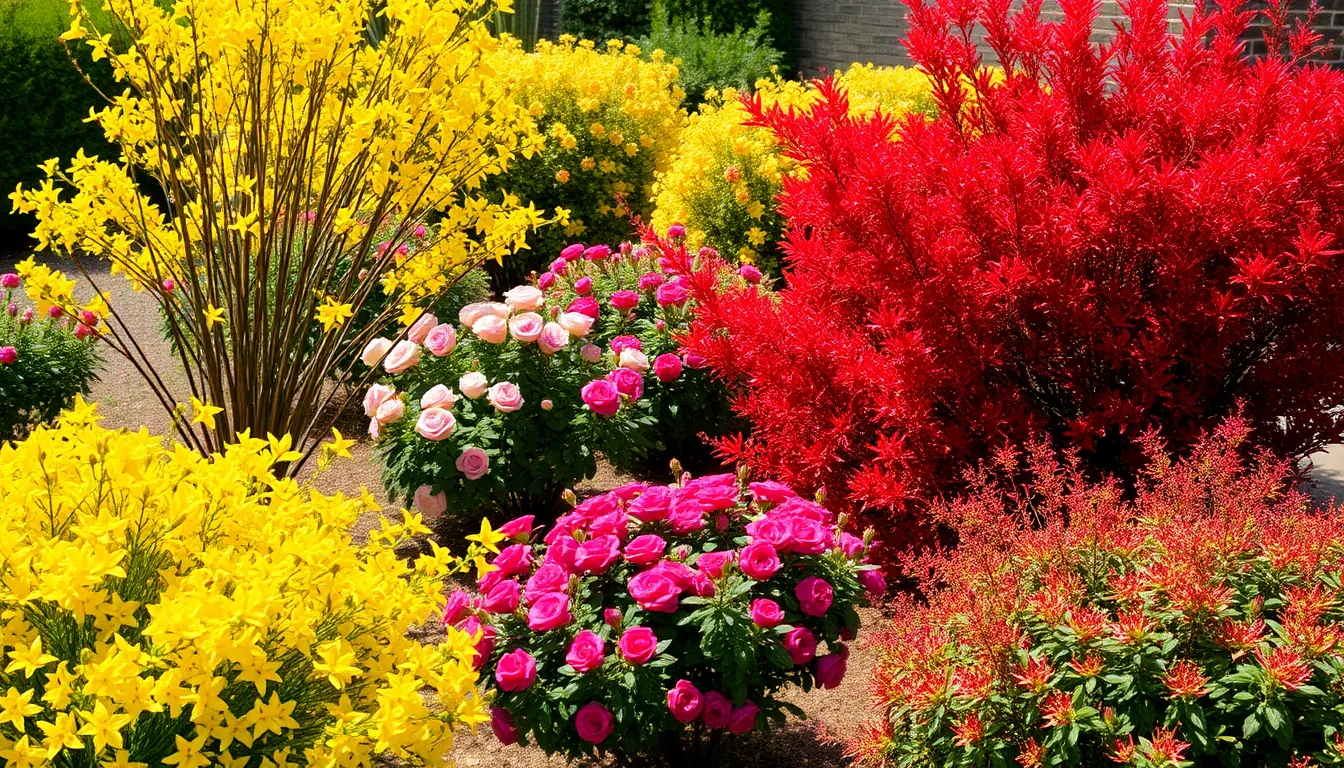
Flowering hedges transform ordinary boundary plantings into spectacular seasonal showcases that deliver color and fragrance throughout the year. Creating vibrant displays requires selecting the right combination of shrubs that bloom at different times.
Forsythia for Spring Blooms
Forsythia creates the most dramatic spring awakening with its brilliant yellow flowers that appear before the leaves emerge. This classic flowering shrub produces dense, cheerful hedges that signal winter’s end with their vibrant early season display. Plant forsythia in full sun to partial shade locations where it’ll receive at least six hours of daily sunlight for optimal blooming.
Well-drained soil conditions help forsythia thrive and maintain vigorous growth patterns throughout the growing season. Pruning should occur immediately after flowering ends to preserve next year’s bloom buds and maintain the hedge’s neat appearance. Dense planting spacing of 3 to 4 feet apart ensures complete coverage and creates an impressive wall of golden color each spring.
Rose Hedges for Summer Color
Rose bushes form stunning summer hedges that deliver continuous blooms from June through September when properly maintained. Choose compact shrub roses or floribundas like Knock Out, Flower Carpet, or Easy Elegance varieties that produce abundant flowers close to the foliage. These rose types create dense, bushy growth patterns perfect for hedging applications.
Full sun exposure remains essential for healthy rose hedge development, requiring at least 6 to 8 hours of direct sunlight daily. Regular watering schedules and good air circulation prevent common rose diseases like black spot and powdery mildew. Pruning techniques should focus on removing spent blooms and shaping the hedge structure to stimulate fresh flower production throughout the summer months.
Burning Bush for Fall Drama
Burning Bush delivers the most spectacular autumn display with its fiery red foliage that creates dramatic fall color for garden hedges. This deciduous shrub (Euonymus alatus) maintains dense, uniform growth patterns that require minimal pruning to achieve neat hedge formations. Plant burning bush in locations receiving full sun to partial shade conditions for the most intense fall color development.
Various soil types accommodate burning bush growth, making it versatile for different landscaping situations and climate zones. Occasional pruning maintains the desired hedge shape and encourages dense branching that enhances the autumn color display. Mature burning bush hedges reach 6 to 10 feet in height, providing excellent privacy screening while delivering seasonal visual impact that peaks in October.
Establish Property Boundaries With Structured Hedge Rows
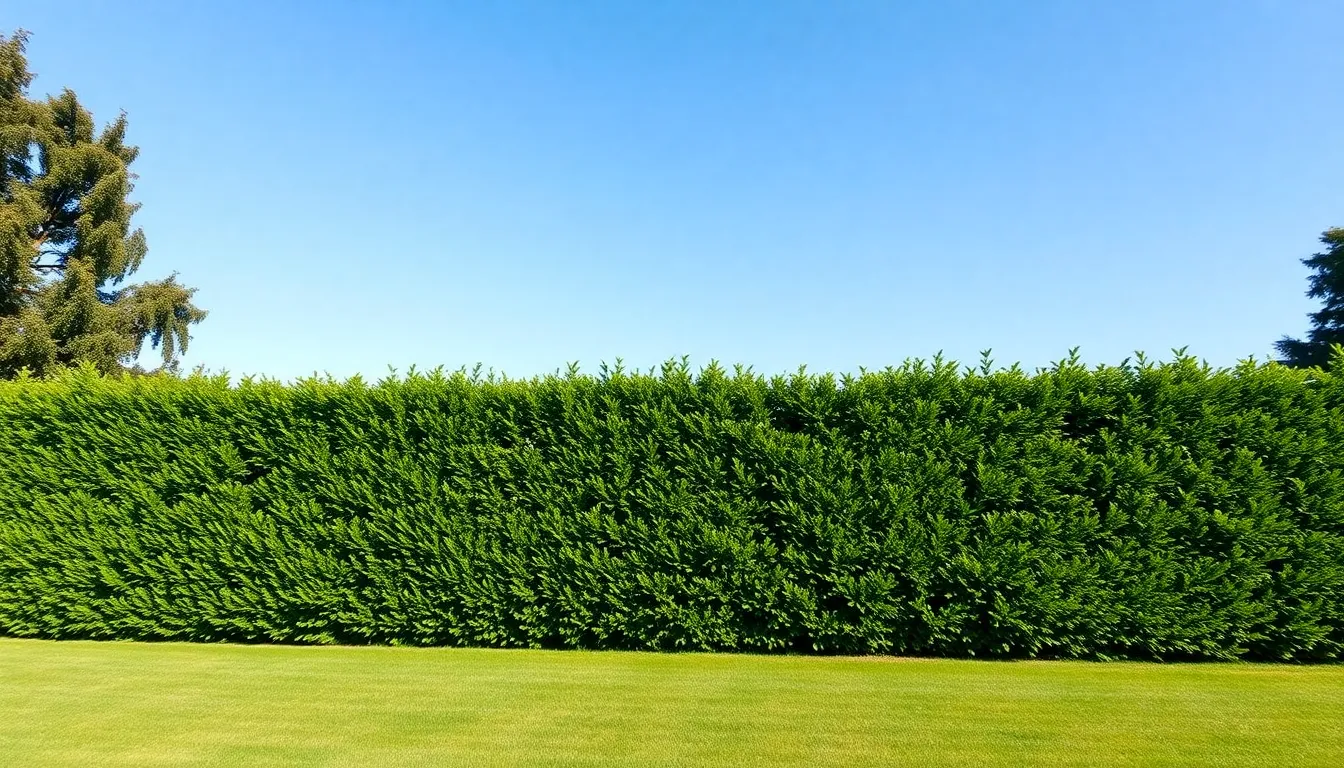
Structured hedge rows provide an elegant solution for establishing clear property boundaries while maintaining the natural beauty of your industry. These purposeful plantings create defined edges that offer both functionality and aesthetic appeal.
Privet for Traditional Fencing
Privet delivers the classic hedge look we’ve all admired in traditional landscapes. This fast-growing plant responds exceptionally well to pruning, allowing us to create neat and uniform boundaries that maintain their formal appearance year after year. We can easily trim privet hedges to our desired height and shape, making them perfect for establishing clear property lines while improving curb appeal. Dense growth patterns ensure these hedges provide excellent privacy screening between neighboring properties.
Yew for Dense Barriers
Yew creates some of the most impenetrable privacy screens available in hedge form. These evergreen shrubs produce dark green foliage that remains attractive throughout all seasons, forming sturdy barriers that effectively block both sight and sound. We appreciate yew’s relatively slow growth rate because it means less frequent maintenance once the hedge reaches maturity. Structured gardens benefit greatly from yew’s ability to provide long-lasting boundaries that require minimal upkeep while offering superior wind protection.
Holly for Natural Security
Holly hedges serve dual purposes by creating attractive boundaries while providing natural security features. Dense growth combined with thorny leaves effectively deters both intruders and unwanted animals from crossing property lines. We love how these evergreen shrubs thrive in various growing conditions while offering year-round interest through their glossy leaves and bright red winter berries. Functional beauty makes holly an excellent choice for homeowners seeking both decorative appeal and practical security benefits along their property boundaries.
Build Multi-Level Garden Zones Through Hedge Layering
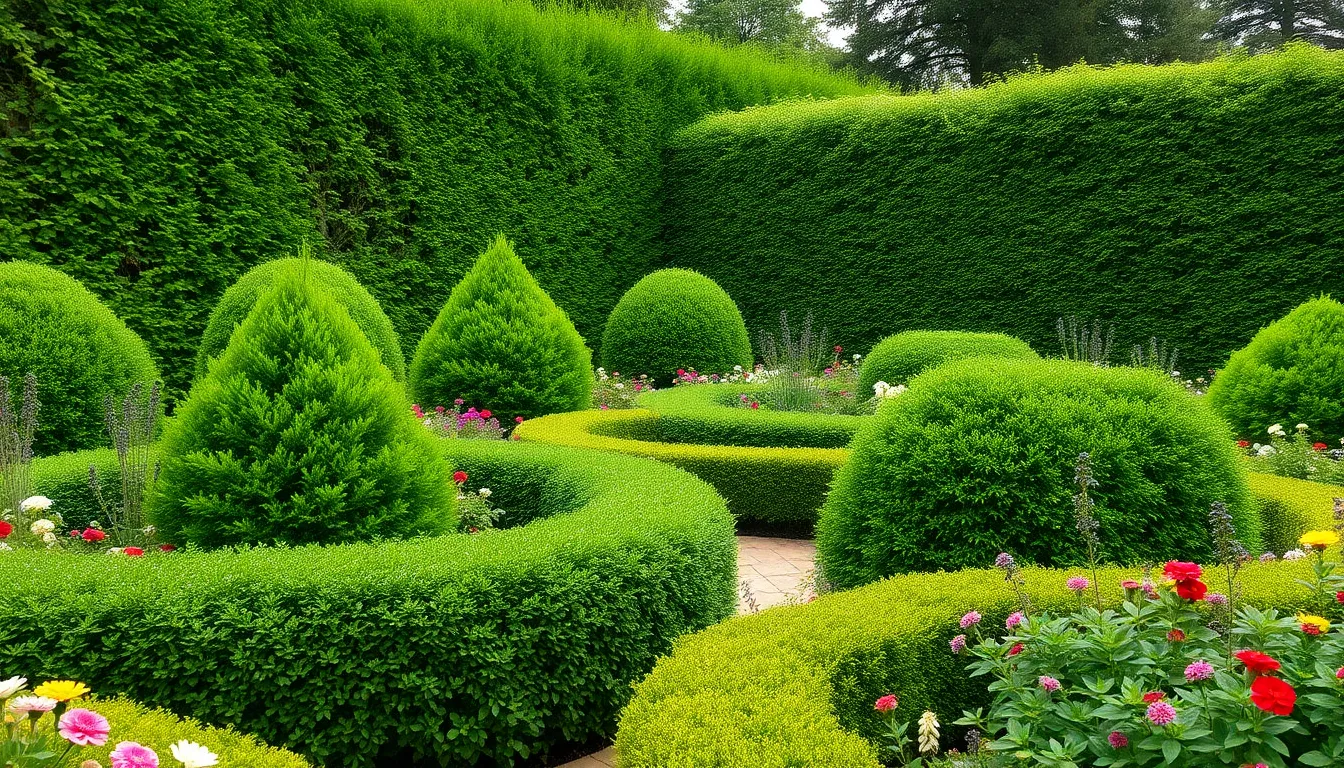
Creating dimension in your industry becomes effortless when you layer hedges at different heights. This strategic approach transforms flat garden spaces into ever-changing outdoor environments with natural depth and visual interest.
Tall Background Hedges
Tall hedges establish the foundation of your multi-level garden design by creating privacy and shelter. These towering plants serve as natural walls that block wind, reduce noise, and provide a dark backdrop that makes colorful flowers and foliage pop. We recommend planting species like Ilex Oakland® ‘Magland’, which reaches 15-25 feet in height and thrives in full sun to partial shade conditions.
Spacing tall hedges 3-4 feet apart creates the dense screening effect you’re looking for. This distance allows each plant enough room to develop while ensuring they’ll grow together into a solid barrier. Most tall hedge varieties prefer medium, well-draining soil with slightly acidic pH levels for optimal growth and health.
These background giants work overtime in your industry by defining outdoor rooms and creating microclimates. Areas behind tall hedges often become more protected spaces where you can grow tender plants that might struggle in windier, more exposed locations.
Medium Height Accent Plants
Medium height hedges function as the workhorses of your layered design, bridging the gap between tall screens and low borders. These plants typically reach mature heights that allow them to define intimate spaces without completely blocking sight lines. We often see them used to highlight special features like patios, water gardens, or sculpture displays.
Plant medium hedges approximately 2 feet apart to achieve proper density and coverage. This closer spacing compared to tall varieties ensures they form cohesive groupings that create visual weight in your design. You can choose between evergreen options for year round structure or deciduous varieties that provide seasonal color changes.
Mixed plantings of evergreen and deciduous medium hedges offer the best of both worlds. The evergreen selections maintain your garden’s bones during winter months, while deciduous varieties add spring flowers, summer foliage, and fall color to keep your industry interesting throughout the growing season.
Low Border Hedging
Low hedges create clean definition along pathways, flower beds, and lawn edges without overwhelming smaller garden spaces. These compact plants typically mature at 3-4 feet tall, making them perfect for suburban and urban settings where you need structure without blocking views. We space low hedging plants about 2 feet apart to form neat, dense lines that frame your industry features.
Border hedging works particularly well for creating garden rooms in limited spaces. You can use these shorter plants to separate different functional areas like dining spaces from play areas or vegetable gardens from ornamental beds. The visual separation helps organize your outdoor space without requiring expensive hardscape materials.
Low hedges provide an affordable alternative to traditional borders like stone or metal edging. Unlike permanent materials, hedge borders can be shaped, moved, or replaced as your garden evolves and your needs change over time.
Shape Artistic Topiary Features From Hedge Plants
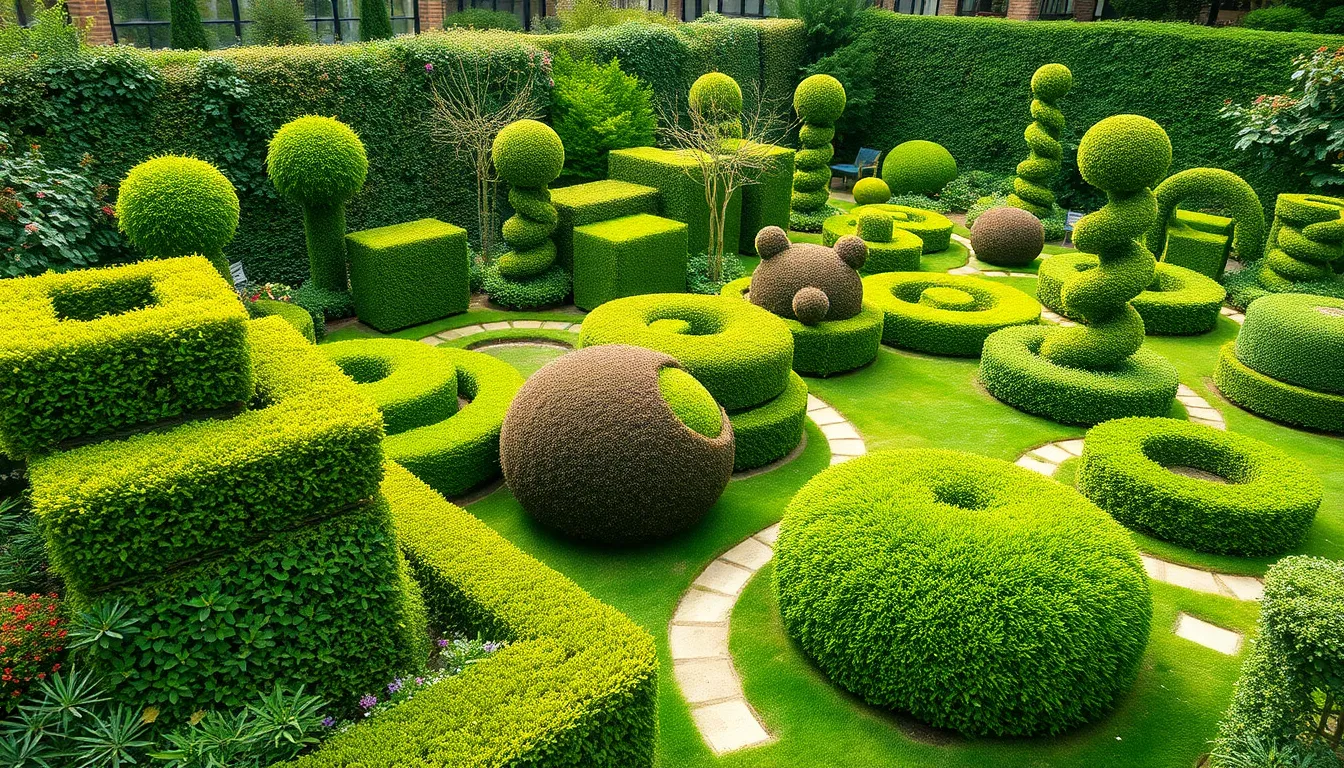
Transforming hedge plants into artistic topiary features adds sculptural beauty to our industry design. We can create living art that serves as stunning focal points while maintaining the natural benefits of hedging.
Geometric Forms and Patterns
Geometric hedge shapes create structure and order within our garden spaces, making them ideal for defining garden rooms or pathways. We can shape hedges into squares, rectangles, spheres, or cones to provide clear boundaries and symmetry throughout our outdoor areas. These architectural forms range from simple clipped edges to intricate repeated designs that enhance visual interest and add professional quality to our industry.
Structured geometric patterns work exceptionally well in formal garden settings where we want to establish a sense of organization. We’ll find that these shapes require regular maintenance to keep their crisp lines, but they reward us with year-round architectural appeal. Square and rectangular forms are perfect for creating natural “walls” that separate different garden areas, while spherical and conical shapes add sculptural elements that draw the eye upward.
Animal and Object Shapes
Skilled pruning allows us to clip hedges into charming animal forms, mythical creatures, or everyday objects that add personality to our gardens. We can create playful elephants, graceful swans, or whimsical teapots that become conversation starters and unique focal points. These artistic shapes require patience and regular trimming, but they provide unmatched personalization for both formal and informal garden settings.
Animal topiary works particularly well in family gardens where we want to create magical spaces for children to explore. We can start with simpler shapes like basic bird forms before advancing to more complex creatures. Object shapes like spiraling cones or geometric abstracts offer sophisticated alternatives that complement modern industry designs while maintaining artistic flair.
Spiral and Curved Designs
Spiral hedge shapes create movement and fluidity in our garden layout, softening rigid landscapes with their organic, ever-changing appearance. We can use curved hedges to outline pathways or create enclosures that flow more naturally than straight lines. These designs add sophisticated sculptural elements with either modern or classic touches, depending on how we integrate them into our overall industry theme.
Curved topiary designs work beautifully when we want to guide visitors through our garden spaces without harsh boundaries. We’ll discover that spiral forms provide year-round visual interest, especially when we choose evergreen hedge plants that maintain their shape through all seasons. These flowing designs complement both contemporary and traditional garden styles, making them versatile choices for various landscaping approaches.
Control Erosion on Slopes With Hedge Plant Solutions
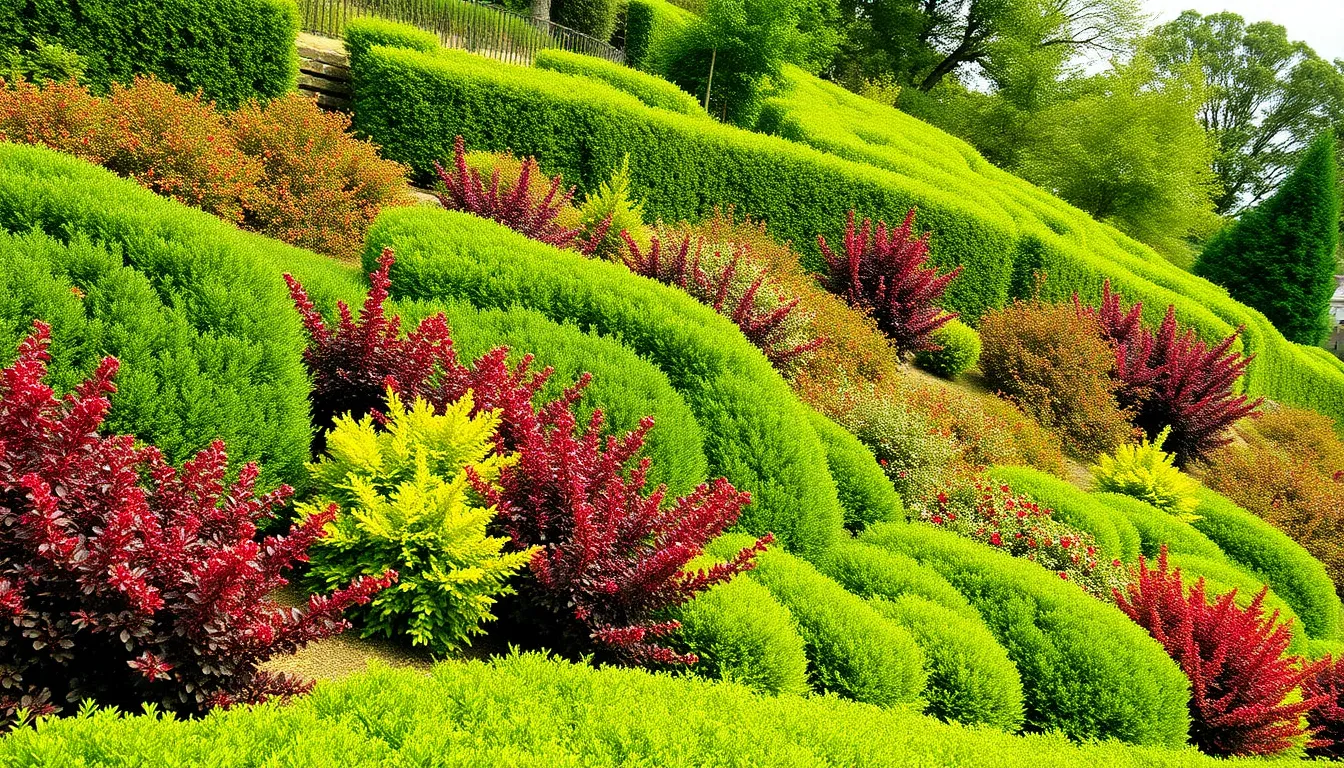
Steep slopes and hillsides present unique landscaping challenges that require plants capable of anchoring soil while maintaining visual appeal. We’ll explore three exceptional hedge plant options that excel at erosion control while adding beauty to your sloped terrain.
Juniper for Steep Inclines
Junipers offer exceptional soil stabilization through their extensive and deep root systems that effectively anchor soil on challenging slopes. These evergreen shrubs provide excellent ground coverage that reduces surface runoff and prevents soil displacement during heavy rainfall. Their dense foliage creates a natural windbreak that minimizes wind-caused erosion while maintaining year-round structure.
Different juniper varieties adapt to various slope gradients and landscaping styles, making them versatile choices for steep terrain. Spreading junipers like Blue Rug and Creeping Juniper work exceptionally well on moderate slopes, while upright varieties such as Skyrocket Juniper handle steeper inclines. We recommend spacing junipers 3-4 feet apart to ensure complete coverage as they mature and establish their root networks.
Cotoneaster for Ground Coverage
Cotoneaster shrubs excel as low-growing ground covers that create dense mats of foliage and roots across sloped surfaces. This horizontal spreading pattern stabilizes soil effectively while preventing erosion through comprehensive root coverage. Their vigorous growth habit allows them to quickly establish on bare hillsides and cover exposed soil areas.
Rock Cotoneaster and Cranberry Cotoneaster varieties tolerate various soil types and conditions commonly found on slopes. These hardy shrubs produce attractive berries and seasonal foliage that add ornamental value beyond their erosion control benefits. We suggest planting cotoneaster in staggered rows 2-3 feet apart to maximize coverage and create visual interest on larger slopes.
Barberry for Stabilization
Barberry shrubs provide robust soil stabilization through their tough, thorny stems and deep root systems that secure soil on banks and steep areas. Their dense growth habit prevents soil washout during heavy rains while creating effective barriers against erosion. Japanese Barberry and Red Barberry varieties offer excellent stability along with seasonal color changes.
These thorny shrubs add natural security to sloped areas while requiring minimal maintenance once established. Barberry’s colorful leaves and berries create year-round visual appeal that enhances your industry’s aesthetic value. We recommend spacing barberry plants 18-24 inches apart on slopes to ensure proper coverage while allowing room for their natural spreading growth pattern.
Frame Garden Pathways Using Hedge Plant Borders
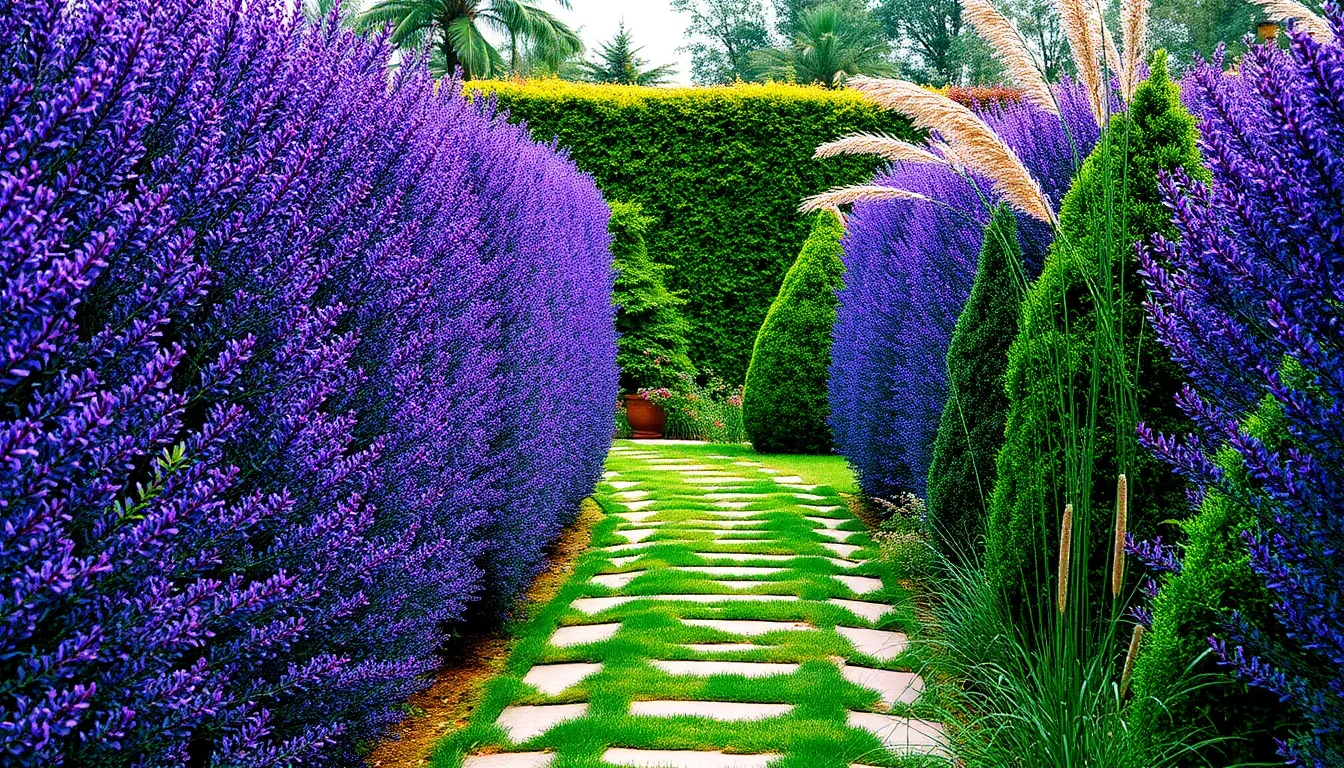
Creating distinct borders along walkways transforms ordinary paths into inviting garden features that guide visitors through your industry. We can use hedge plants to establish clear visual boundaries while adding structure and beauty to our outdoor spaces.
Lavender for Fragrant Walkways
Lavender hedges offer sensory delight as visitors brush against the aromatic foliage while strolling through your garden. This Mediterranean favorite releases its signature fragrance when touched, creating memorable experiences for everyone who walks your paths. We recommend planting lavender varieties like ‘Hidcote’ or ‘Munstead’ approximately 18 inches apart for optimal coverage.
The purple flower spikes attract beneficial pollinators including bees and butterflies, improving your garden’s biodiversity. These hardy plants thrive in sunny locations with well-drained soil, making them perfect for most pathway edges. Regular pruning after flowering keeps lavender hedges compact and promotes vigorous growth for the following season.
Dwarf Boxwood for Clean Lines
Dwarf boxwood varieties create sophisticated pathway borders with their naturally compact growth habits and dense evergreen foliage. These classic hedge plants maintain their neat appearance year round without requiring frequent maintenance. We can easily shape boxwood through light pruning to achieve perfectly straight lines or gentle curves along our walkways.
‘Green Gem’ and ‘Green Mountain’ cultivars work exceptionally well for pathway borders due to their slow growth rates and uniform shapes. These varieties typically reach 2-3 feet in height, providing subtle definition without overwhelming smaller garden spaces. The glossy green leaves create elegant contrast against colorful flowering plants and seasonal displays.
Ornamental Grasses for Movement
Ornamental grasses bring ever-changing texture and gentle motion to pathway borders through their graceful swaying in breezes. These versatile plants soften the rigid lines of traditional hedges while adding seasonal interest with changing colors and distinctive seed heads. We can choose from compact varieties like fountain grass or taller options such as feather reed grass depending on our design goals.
Switchgrass and little bluestem provide excellent pathway definition while offering stunning fall colors ranging from golden yellow to deep burgundy. These native grasses require minimal water once established and adapt well to various soil conditions. The vertical growth habit creates natural screens that maintain visual interest throughout multiple seasons.
Attract Wildlife With Native Hedge Plant Varieties
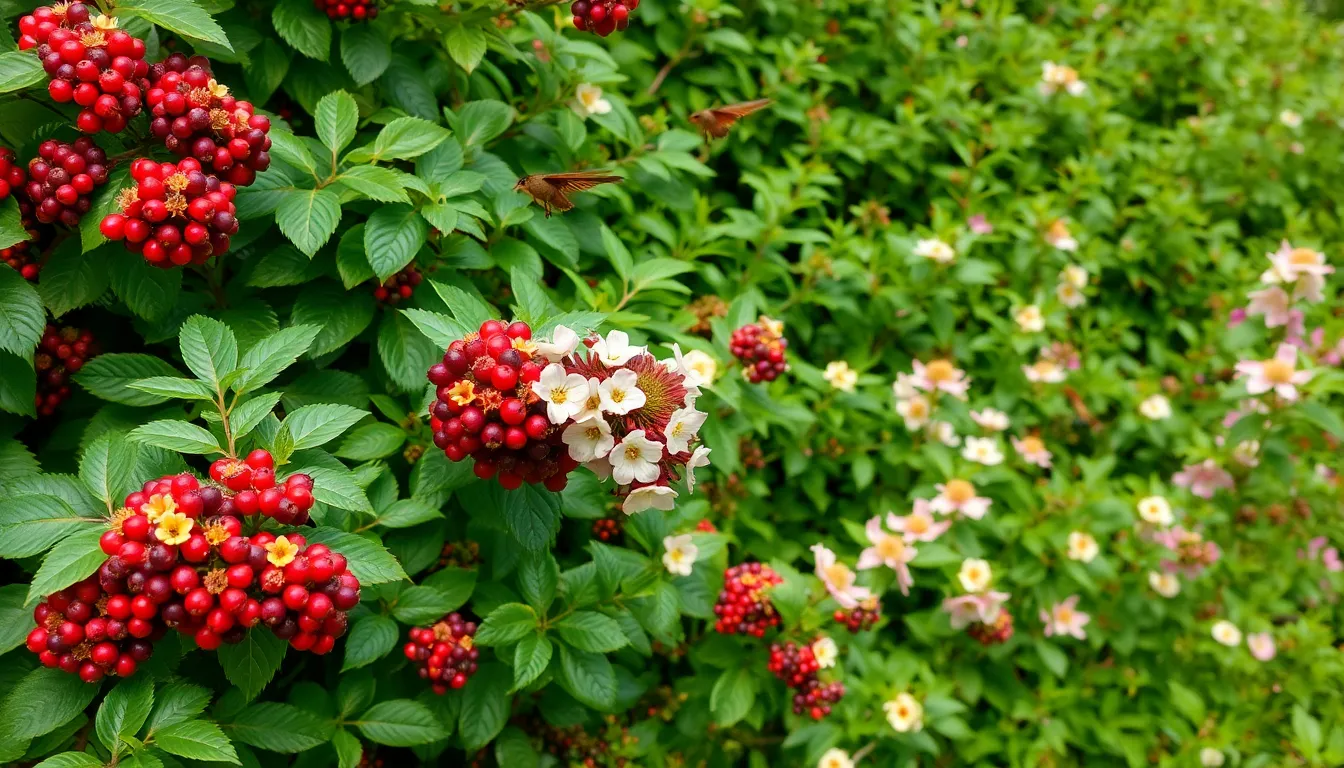
Native hedge plants transform our landscapes into thriving ecosystems that support local wildlife year-round. We’ll explore how strategic selection of indigenous shrubs creates natural habitats while maintaining beautiful boundaries in our gardens.
Berry-Producing Shrubs for Birds
Chokeberries provide exceptional food sources for many bird species throughout the growing season. Red chokeberry (Aronia arbutifolia) and black chokeberry (Aronia melanocarpa) thrive in various soil conditions from moist to dry sites, making them adaptable choices for different garden locations. These native shrubs produce bright red or dark purple berries that attract songbirds, game birds, and small mammals.
Spring flowering benefits extend beyond berry production as chokeberries display clusters of white flowers that draw early pollinators. Bees, butterflies, and beneficial insects visit these blooms before the berries develop. The shrubs tolerate acid to neutral soil pH levels, requiring minimal soil amendments in most gardens.
Wildlife value multiplies when we combine berry shrubs with other food sources like native dogwoods. Shrub dogwoods (Cornus species) support approximately 100 moth and butterfly species while providing berries for birds and mammals. Their broken stems naturally create nesting sites for solitary bees without harming the plant’s health.
Flowering Hedges for Pollinators
Buddleja creates pollinator magnets with its nectar-rich flower clusters that bloom continuously throughout summer months. Butterfly bush varieties produce flowers in purple, mauve, white, or yellow colors depending on the cultivar selection. These shrubs grow best in sunny, well-drained locations and attract butterflies, bees, hoverflies, and hummingbirds.
Staggered blooming schedules maximize pollinator support when we select multiple flowering species with different bloom times. Early spring flowers from native shrubs provide nectar when few other sources exist. Summer bloomers continue the food supply during peak insect activity periods.
Soil compatibility ensures successful pollinator gardens as different flowering shrubs prefer exact pH ranges and moisture levels. Matching shrub requirements to our site conditions creates thriving pollinator habitats. Proper plant selection reduces maintenance needs while maximizing flower production.
Dense Shrubs for Nesting Sites
Protective cover develops naturally in spreading shrub varieties like chokeberries that form dense thickets over time. These shrubs create safe nesting environments for songbirds while providing escape routes from predators. Multiple branching patterns offer various nesting heights within single hedge rows.
Layered habitat structures enhance biodiversity when we maintain mixed native hedgerows with different growth habits. Dogwood thickets provide ground level to mid-height nesting opportunities. Taller shrubs offer elevated nesting sites for different bird species.
Year-round shelter benefits extend beyond nesting season as dense native hedges protect wildlife during harsh weather conditions. Evergreen and deciduous shrubs together create windbreaks and thermal refuges. These sheltered areas support overwintering beneficial insects and provide roosting sites for birds during cold months.
Minimize Maintenance With Low-Care Hedge Options
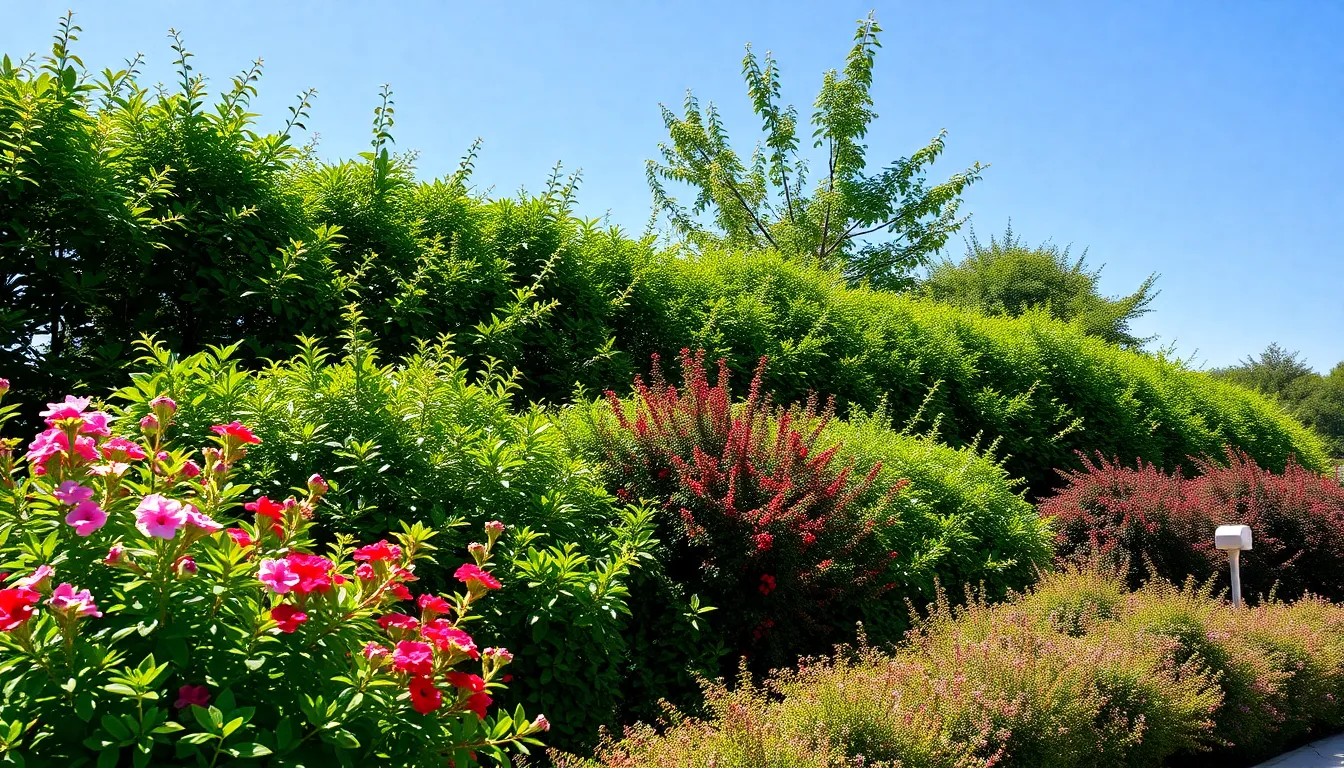
Smart hedge selection reduces yard work while maintaining beautiful boundaries. We’ll explore varieties that thrive with minimal intervention and care.
Drought-Tolerant Varieties
Indian hawthorn stands out as our top drought resistant choice for warm climate landscapes. This versatile shrub produces dense growth patterns and spring blooms while tolerating both heat and extended dry periods. Water conservation becomes effortless when we plant Indian hawthorn in areas prone to drought conditions.
Berberis species offer exceptional drought tolerance alongside colorful foliage options. These hardy shrubs adapt to various soil conditions and require minimal watering once established. Slower growing varieties like Berberis thunbergii f. atropurpurea provide purple red leaves that maintain their vibrant color throughout dry seasons.
Osmanthus varieties thrive in both sun and partial shade while tolerating drought conditions. These evergreen shrubs produce fragrant flowers and adapt well to water restricted environments. Established osmanthus hedges require little supplemental irrigation during normal growing seasons.
Slow-Growing Species
Yew hedges eliminate frequent pruning needs while providing year round greenery. These tough evergreen shrubs grow at a measured pace and rarely experience pest or disease problems. Well drained soil conditions allow yew plants to establish strong root systems that support long term hedge stability.
Holly varieties offer glossy evergreen foliage with naturally slow growth habits. These shrubs require minimal pruning intervention and maintain their shape without constant attention. Dense holly hedges provide privacy screening while demanding little maintenance from busy homeowners.
Cryptomeria ‘Globosa Nana’ creates compact evergreen hedges perfect for low maintenance landscapes. This slow growing variety thrives in moist, well drained soil conditions and partial shade locations. Minimal pruning keeps these hedges looking neat and structured throughout the growing season.
Disease-Resistant Plants
Yew species demonstrate remarkable resistance to common hedge plant diseases and pests. These evergreen shrubs maintain healthy foliage year round without requiring chemical treatments or intensive care. Proper drainage prevents the few issues that might affect yew hedge health.
Evergreen euonymus provides lush, dark green leaves that resist most common plant diseases. These adaptable shrubs tolerate varied soil conditions while maintaining their glossy appearance naturally. Disease problems rarely affect established euonymus hedges when planted in appropriate locations.
Boxwood cultivars offer classic hedge appeal with natural disease resistance when properly sited. These dense evergreen shrubs adapt to many industry styles and resist common fungal issues. Adequate air circulation and proper spacing help boxwood hedges maintain their health without frequent intervention.
Conclusion
We’ve shown you how hedge plants can completely transform your outdoor space with strategic planning and the right plant selections. From creating natural boundaries with Arborvitae to adding seasonal color with flowering varieties these versatile plants offer endless possibilities for improving your industry’s beauty and functionality.
Whether you’re looking to establish privacy screens build multi-level garden zones or support local wildlife there’s a hedge solution that fits your exact needs and maintenance preferences. The key is choosing plants that thrive in your climate while matching your aesthetic vision.
With proper selection and placement hedge plants will reward you with years of natural beauty low maintenance requirements and increased property value. Start planning your hedge industry project today and watch as these remarkable plants bring structure color and life to your outdoor sanctuary.
Frequently Asked Questions
What are the main benefits of using hedge plants in landscaping?
Hedge plants transform ordinary yards by creating natural boundaries, defining garden areas, and providing year-round structure. They enhance curb appeal, offer privacy screening, and can be achieved on any budget without professional skills. Strategic plant selection and placement help create beautiful outdoor sanctuaries while adding both functional and aesthetic value to your property.
Which evergreen hedge plants are best for privacy screens?
The top evergreen hedge plants for privacy include Arborvitae (with varieties like Green Giant, Emerald Green, and Techny), Leyland Cypress for rapid growth, and Boxwood for formal borders. These plants provide year-round coverage, adapt to different climates and spaces, and can be pruned to maintain desired shapes and density.
What flowering hedge plants provide the best seasonal color displays?
Forsythia offers vibrant yellow spring blooms, compact rose bushes like Knock Out and Flower Carpet provide continuous summer color, and Burning Bush delivers stunning red fall foliage. Each requires specific care: Forsythia needs sunlight and proper pruning, roses require full sun and regular maintenance, while Burning Bush serves dual purposes as privacy screen and colorful display.
How can hedge plants help establish clear property boundaries?
Privet offers fast-growing traditional fencing with adaptability to pruning for uniform boundaries. Yew creates dense barriers requiring minimal maintenance once established. Holly provides dual-purpose hedging with decorative appeal and natural security through thorny leaves, effectively deterring intruders while thriving in various conditions and clearly marking property lines.
What is hedge layering and how does it enhance garden design?
Hedge layering creates multi-level garden zones using plants of different heights to add dimension and visual interest. It includes tall background hedges like Ilex Oakland® for privacy, medium height accent plants that bridge gaps between levels, and low border hedging for pathway definition, creating structured outdoor spaces without overwhelming smaller areas.
Can hedge plants be shaped into artistic forms?
Yes, hedge plants excel in topiary art. They can be shaped into geometric forms for formal structure, whimsical animal figures for personality and charm, and spiral or curved designs for movement and fluidity. These artistic applications enhance garden aesthetics, guide visitors through spaces, and add unique character to outdoor environments.
How do hedge plants help with erosion control on slopes?
Junipers offer extensive root systems for soil stabilization, Cotoneaster provides dense ground coverage, and Barberry delivers robust stabilization with seasonal color. These plants adapt to various slope gradients and require strategic planting for maximum coverage and visual appeal while effectively preventing soil erosion on challenging terrain.
What hedge plants work best for framing garden pathways?
Lavender creates fragrant walkways while attracting pollinators and thriving in sunny locations. Dwarf boxwood offers clean, sophisticated lines with minimal maintenance requirements. Ornamental grasses add texture, movement, and seasonal interest, creating dynamic borders that enhance sensory experiences and visual appeal along garden paths.
How do native hedge plants support local wildlife ecosystems?
Native hedge plants create thriving ecosystems through berry-producing shrubs like chokeberries that feed birds, flowering hedges like Buddleja that support summer pollinators, and dense shrubs providing safe nesting environments. Layered native hedgerows enhance biodiversity and offer year-round shelter, promoting healthy local wildlife populations.
What are the best low-maintenance hedge options?
Drought-tolerant plants like Indian hawthorn, Berberis, and Osmanthus require minimal water once established. Slow-growing species such as Yew and Holly need less frequent pruning. Disease-resistant varieties like evergreen euonymus maintain health without intensive care, making them ideal for gardeners seeking beautiful hedges with minimal upkeep requirements.


